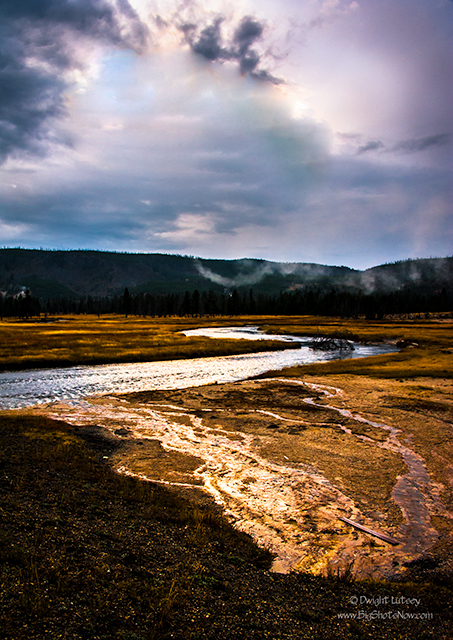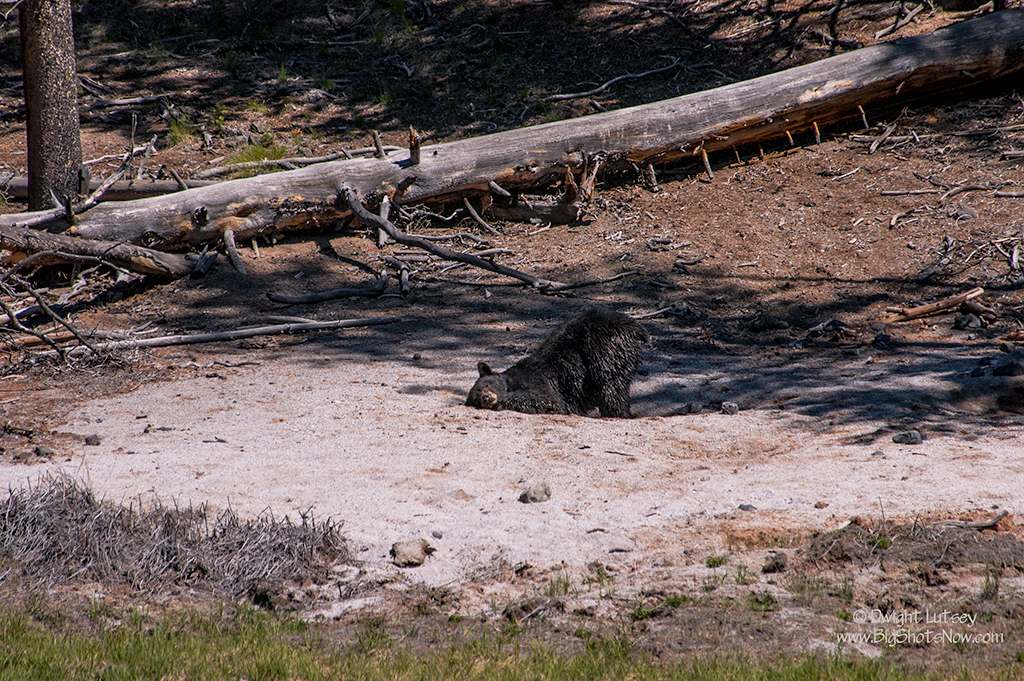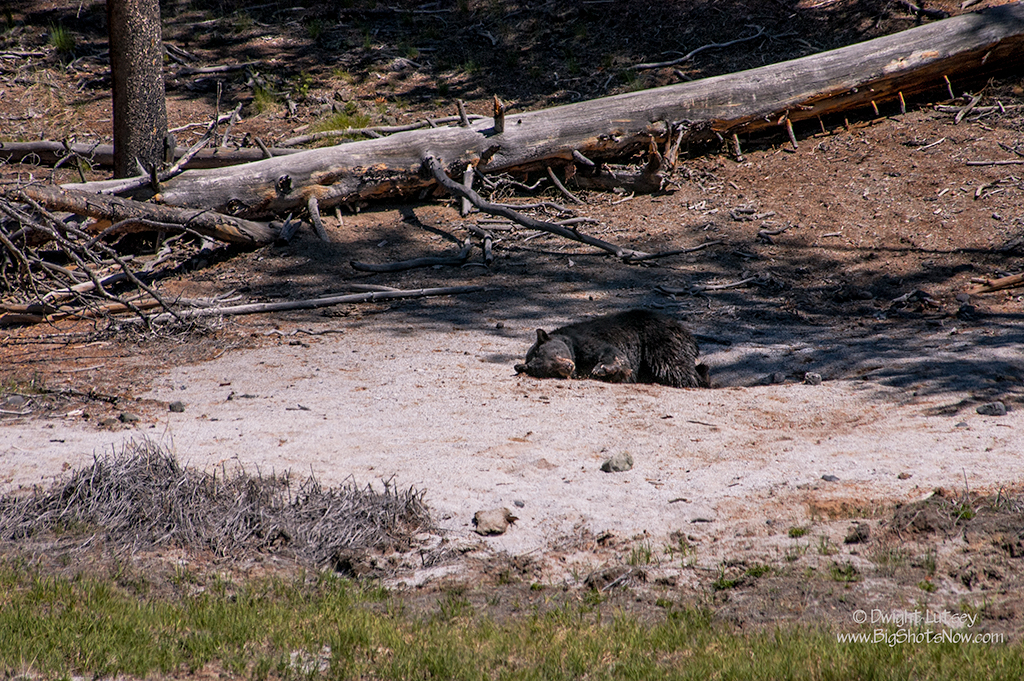
Every once in a while when conditions are perfect there is a phenomenon that occurs along the Firehole river. It is a rare event and only a privileged few have had the opportunity to see it. It’s called Firehole Gold and it’s a once and a lifetime experience.
As you might know, or are soon to learn, there is gold in the rivers of the west. In some of them more than others but every river has its share. The gold is in the form of almost microscopic flakes with the particles being small enough and light enough that they can be suspended in the water and carried downstream. Now you can walk up to the river anytime of day and scoop up a handful of water and you won’t see this gold, but it is there, its visibility is only brought out under certain circumstances.
The Firehole river that runs through Yellowstone National Park through valleys and meadows, past thermal geysers, along the highway where you and I can see it, is one of the most heavily laden gold-bearing rivers in the west. Where the source of this gold originates is still under speculation. Some say it is pumped up from a huge gold deposit underground by the many geysers that line the river. The scalding hot water softens the gold and in so doing causes the minute flakes to break off and rush to the surface to be swept down stream by the rivers flow.
Others say that there was once an enormous deposit of gold miles wide, about the size of two or even three of those little States back East and dozens, if not hundreds of feet deep up north a ways, simply lying on the surface of the ground until a glacier came through and pulverized it by using its tremendous mass and weight of ice and boulders to grind the chunks and nugget’s of gold the size of houses into the flakes we see in the river today. This is a very plausible theory because glaciers are really heavy. They don’t even make scales today that could weigh them. But even if you can’t weigh them, the glaciers weigh more than all the heaviest stuff you can imagine put together, except for a mountain, mountains and glaciers weigh about the same, and gold is soft, so a glacier could easily reduce even big fat giant pieces of gold to microscopic dust if it wanted to.
Whatever its origin the gold is there and it will occasionally display itself when the conditions are perfect and the necessary components are all optimally aligned. There is a place along the river’s length just south of the confluence of the Gibbon, the Madison and the Firehole rivers that provides these needs exactly. It is a flat portion of the river’s bank that acts as a giant pan, where the water with its rich load of nearly microscopic gold particles will flow over the many rough-edged pebbles lining the bank thereby sifting itself out of the rivers flow, much like a gold miner panning for gold will do, and briefly deposit itself just under the river’s surface, building up and up until the millions of flakes become visible as a solid sheet of gold only a fraction of an inch thick but thick enough that it can be seen.
This seems to occur near sunset as the sun must be low enough that its glancing rays can reflect the gold beneath the water’s surface. The heat of the dying rays of the setting sun are just the right temperature to cause the flakes to momentarily adhere to each other, forming what looks to be a solid sheet of gold. There can’t be any wind as the agitation of the water’s surface will break up the sheet and cause the flakes to simply continue on downstream. And one of the most important conditions is that you have to be there to see it.
You might think, OK Gold! let’s go get it. But it doesn’t work that way. The flakes are really too small to be filtered out of the water and although gold is still the most valuable object we can get our hands on, there is one thing even more valuable. And that is the fleeting beauty created by this rare interaction of the sunset, the extraordinary land the river runs through, and your participation in the experience. You will spend the gold and it will be gone but the memory of this sight of the Firehole gold will live in your heart forever.
Posted and filed under “Things that are true, kind of”.




You must be logged in to post a comment.